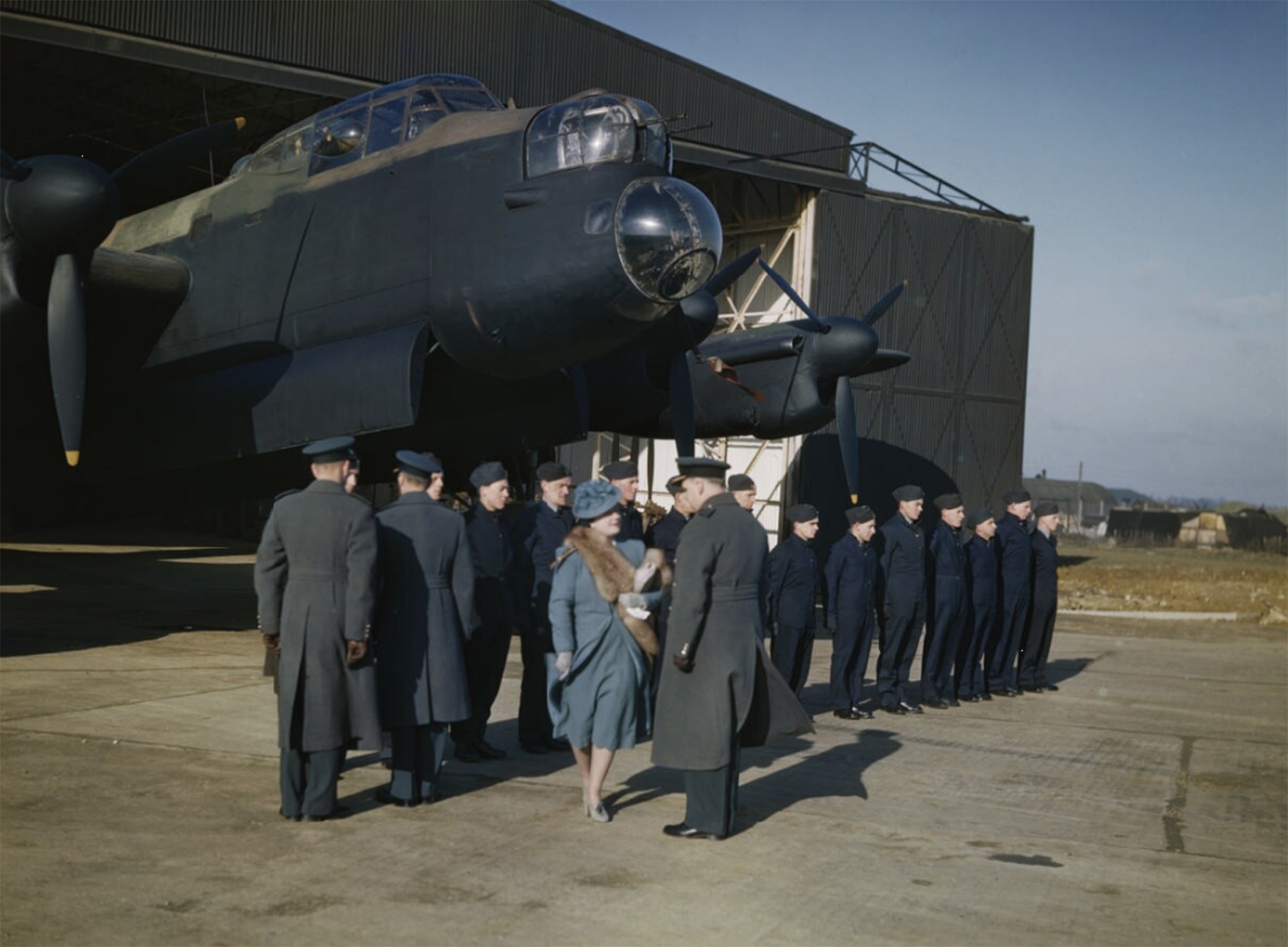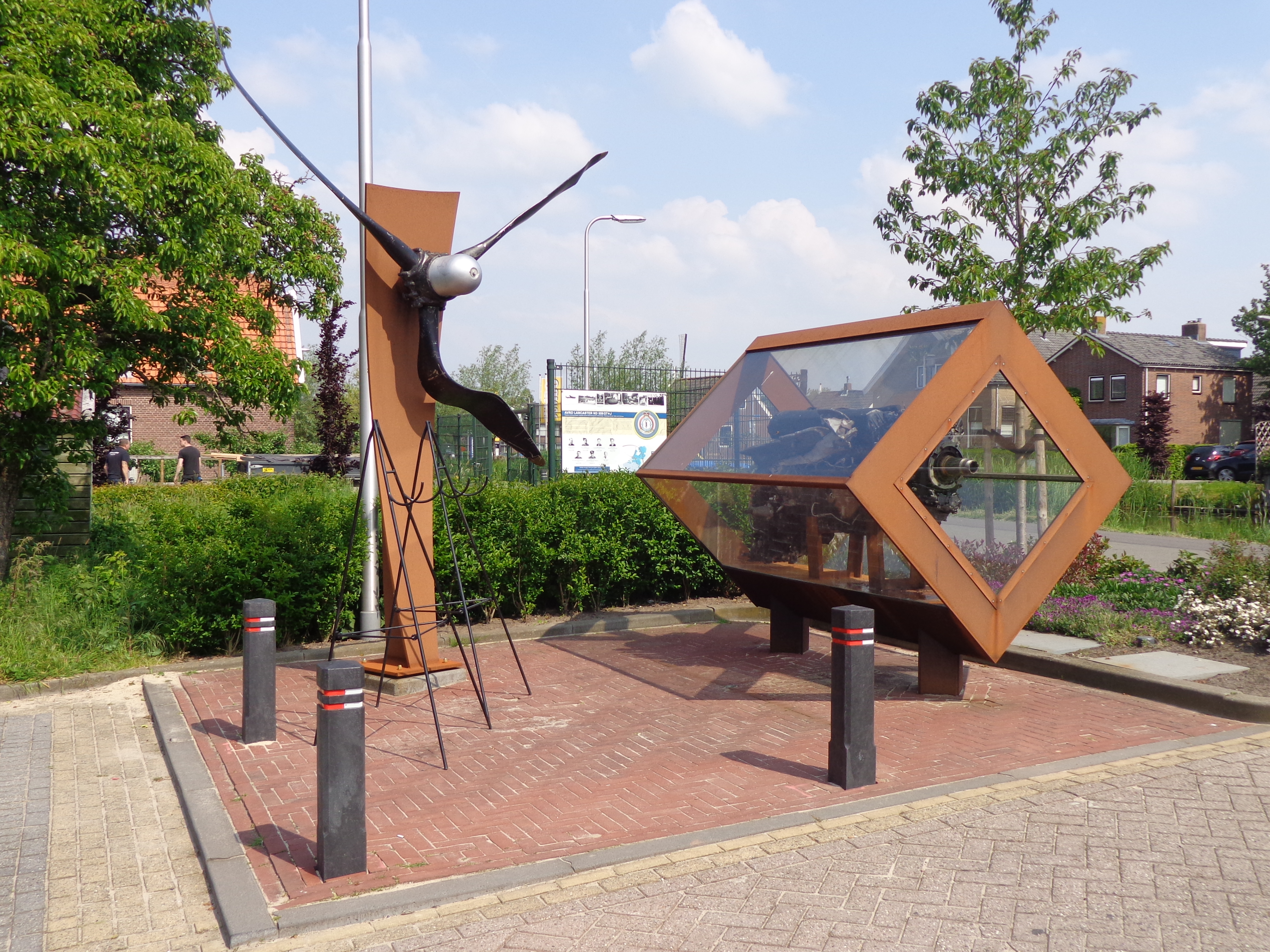No. 156 Squadron RAF on:
[Wikipedia]
[Google]
[Amazon]
No. 156 Squadron RAF was a
 The squadron reformed in February 1942 from the home echelon of 40 Squadron at
The squadron reformed in February 1942 from the home echelon of 40 Squadron at
 There is a memorial to the crash of Avro Lancaster ED840, 156 Squadron, which crashed in the town in Lier,
There is a memorial to the crash of Avro Lancaster ED840, 156 Squadron, which crashed in the town in Lier, 
156 Squadron site
156 Squadron history on the official RAF website
{{Royal Air Force
Royal Air Force
The Royal Air Force (RAF) is the United Kingdom's air and space force. It was formed towards the end of the First World War on 1 April 1918, becoming the first independent air force in the world, by regrouping the Royal Flying Corps (RFC) an ...
Squadron that was active as a bomber unit in World War II
World War II or the Second World War, often abbreviated as WWII or WW2, was a world war that lasted from 1939 to 1945. It involved the vast majority of the world's countries—including all of the great powers—forming two opposing ...
.
History
Formation and World War I
No. 156 Squadron Royal Air Force was first formed on 12 October 1918 atRAF Wyton
Royal Air Force Wyton or more simply RAF Wyton is a Royal Air Force station near St Ives, Cambridgeshire, England. The airfield is decommissioned and is now home to the Joint Forces Intelligence Group.
History Flying station
Wyton has b ...
Jefford 2001, p. 66. and equipped with DH 9 aircraft, but was disbanded on 9 December 1918 without becoming operational.Jefford 2001, pp. 112-113.
Reformation in World War II
 The squadron reformed in February 1942 from the home echelon of 40 Squadron at
The squadron reformed in February 1942 from the home echelon of 40 Squadron at RAF Alconbury
Royal Air Force Alconbury or more simply RAF Alconbury is an active Royal Air Force station near Huntingdon, England. The airfield is in the civil parish of The Stukeleys, close to the villages of Great Stukeley, Little Stukeley, and Alconbur ...
, in the Huntingdonshire
Huntingdonshire (; abbreviated Hunts) is a non-metropolitan district of Cambridgeshire and a historic county of England. The district council is based in Huntingdon. Other towns include St Ives, Godmanchester, St Neots and Ramsey. The popu ...
area of Cambridgeshire
Cambridgeshire (abbreviated Cambs.) is a county in the East of England, bordering Lincolnshire to the north, Norfolk to the north-east, Suffolk to the east, Essex and Hertfordshire to the south, and Bedfordshire and Northamptonshire to the ...
, as part of No. 3 Group RAF and was equipped with Wellingtons. In August 1942 it joined No. 8 Group RAF
No. 8 Group was a Royal Air Force group which existed during the final year of the First World War and during the Second World War.
First World War
No. 8 Group was formed in April 1918 as a training unit and designated 8 Group (Training). I ...
it became one of the original pathfinder
Pathfinder may refer to:
Businesses
* Pathfinder Energy Services, a division of Smith International
* Pathfinder Press, a publisher of socialist literature
Computing and information science
* Path Finder, a Macintosh file browser
* Pathfinder ( ...
squadrons, converting to Lancasters in January 1943. It continued in the pathfinder role until the end of the war, being based at RAF Warboys
RAF Warboys is a former Royal Air Force heavy bomber station, situated just outside the village of Warboys in Huntingdonshire (now Cambridgeshire).
History
During the early years of the war, Warboys was a relatively conventional bomber station ...
, RAF Upwood
Royal Air Force Upwood or more simply RAF Upwood is a former Royal Air Force station adjacent to the village of Upwood, Cambridgeshire, England, in the United Kingdom.
It was a non-flying station which was under the control of the United St ...
and finally its original founding base, RAF Wyton
Royal Air Force Wyton or more simply RAF Wyton is a Royal Air Force station near St Ives, Cambridgeshire, England. The airfield is decommissioned and is now home to the Joint Forces Intelligence Group.
History Flying station
Wyton has b ...
, where it disbanded on 25 September 1945. The Jamaican airman Billy Strachan flew 30 operations as an air gunner with the squadron.
Notable pilots
* Gordon Cochrane *Peter Isaacson
Peter Stuart Isaacson, AM, DFC, AFC, DFM (31 July 1920 – 7 April 2017) was an Australian publisher and decorated military pilot. He was the owner of Peter Isaacson Publications, publisher of various trade journals and suburban newspa ...
* Billy Strachan
* Frank Watkins
* Pilot Officer Colin Kirkus
Colin Fletcher Kirkus (18 September 1910 – 14 September 1942 was a British rock climber. He climbed extensively in Wales and elsewhere, such as the Alps and the Himalaya. He wrote the instruction book ''Let's Go Climbing!'' which inspired Joe ...
- lost without trace 13/14 September 1942 on a mission to Bremen in Vickers Wellington ''BJ879''.
Memorials
 There is a memorial to the crash of Avro Lancaster ED840, 156 Squadron, which crashed in the town in Lier,
There is a memorial to the crash of Avro Lancaster ED840, 156 Squadron, which crashed in the town in Lier, Belgium
Belgium, ; french: Belgique ; german: Belgien officially the Kingdom of Belgium, is a country in Northwestern Europe. The country is bordered by the Netherlands to the north, Germany to the east, Luxembourg to the southeast, France to th ...
on 17 June 1943. It was on a mission to Cologne
Cologne ( ; german: Köln ; ksh, Kölle ) is the largest city of the German western state of North Rhine-Westphalia (NRW) and the fourth-most populous city of Germany with 1.1 million inhabitants in the city proper and 3.6 millio ...
when it was shot down by anti-aircraft fire. In the Netherlands is a memorial for the Avro Lancaster ND559 crew. The crew was on 22 May 1944, on a mission to Duisburg
Duisburg () is a city in the Ruhr metropolitan area of the western German state of North Rhine-Westphalia. Lying on the confluence of the Rhine and the Ruhr rivers in the center of the Rhine-Ruhr Region, Duisburg is the 5th largest city in No ...
. On the way back the plane was shot down above Molenaarsgraaf
Molenaarsgraaf is a village in the Dutch province of South Holland. It is a part of the municipality of Molenlanden, and lies about 11 km west of Gorinchem.
In 2001, the village of Molenaarsgraaf had 414 inhabitants. The built-up area of the ...
and Brandwijk
Brandwijk is a small village in the Dutch province of South Holland. It is a part of the municipality of Molenlanden, and lies about 13 km west of Gorinchem
Gorinchem ( or ), also spelled Gorkum, is a city and municipality in the western Ne ...
.

Aircraft operated
Squadron bases
Commanding officers
References
Notes
Bibliography
* Bowyer, Michael J.F. and John D.R. Rawlings. ''Squadron Codes, 1937-56''. Cambridge, UK: Patrick Stephens Ltd., 1979. . * Flintham, Vic and Andrew Thomas. ''Combat Codes: A full explanation and listing of British, Commonwealth and Allied air force unit codes since 1938''. Shrewsbury, Shropshire, UK: Airlife Publishing Ltd., 2003. . * Halley, James J. ''The Squadrons of the Royal Air Force & Commonwealth, 1918-88''. Tonbridge, Kent, UK: Air-Britain (Historians) Ltd., 1988. . * Jefford, C.G. ''RAF Squadrons, a Comprehensive Record of the Movement and Equipment of all RAF Squadrons and their Antecedents since 1912''. Shrewsbury, Shropshire, UK: Airlife Publishing, 2001. . * Moyes, Philip J.R. ''Bomber Squadrons of the RAF and their Aircraft''. London: Macdonald and Jane's (Publishers) Ltd., 1976. . * Wadsworth, Michael P. ''They Led the Way: the Story of Pathfinder Squadron 156''. Beverley: Highgate Publications Ltd., 1992. .External links
156 Squadron site
156 Squadron history on the official RAF website
{{Royal Air Force
156
Year 156 (Roman numerals, CLVI) was a leap year starting on Wednesday (link will display the full calendar) of the Julian calendar. At the time, it was known as the Year of the Consulship of Silvanus and Augurinus (or, less frequently, year 90 ...
Military units and formations established in 1918
1918 establishments in England